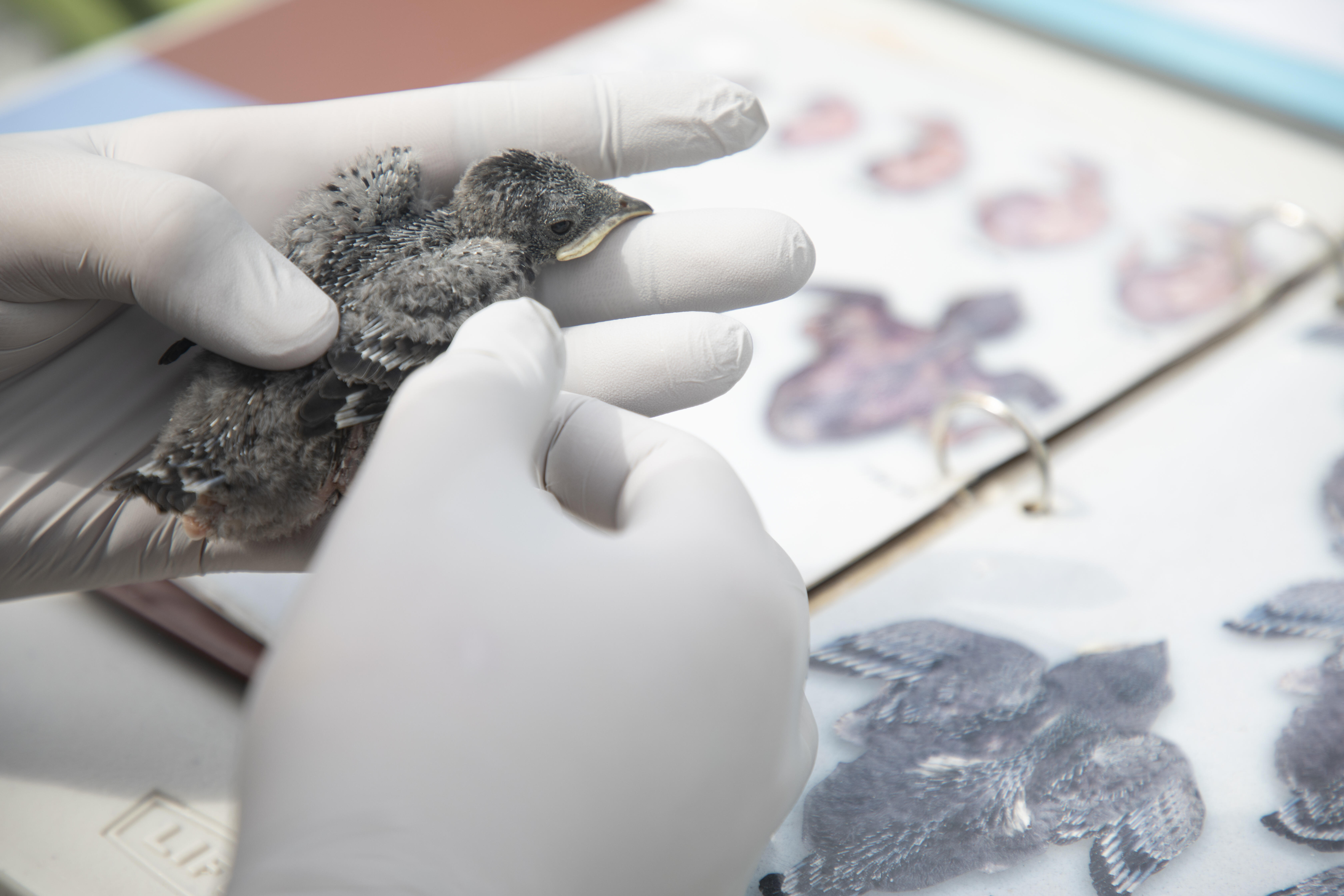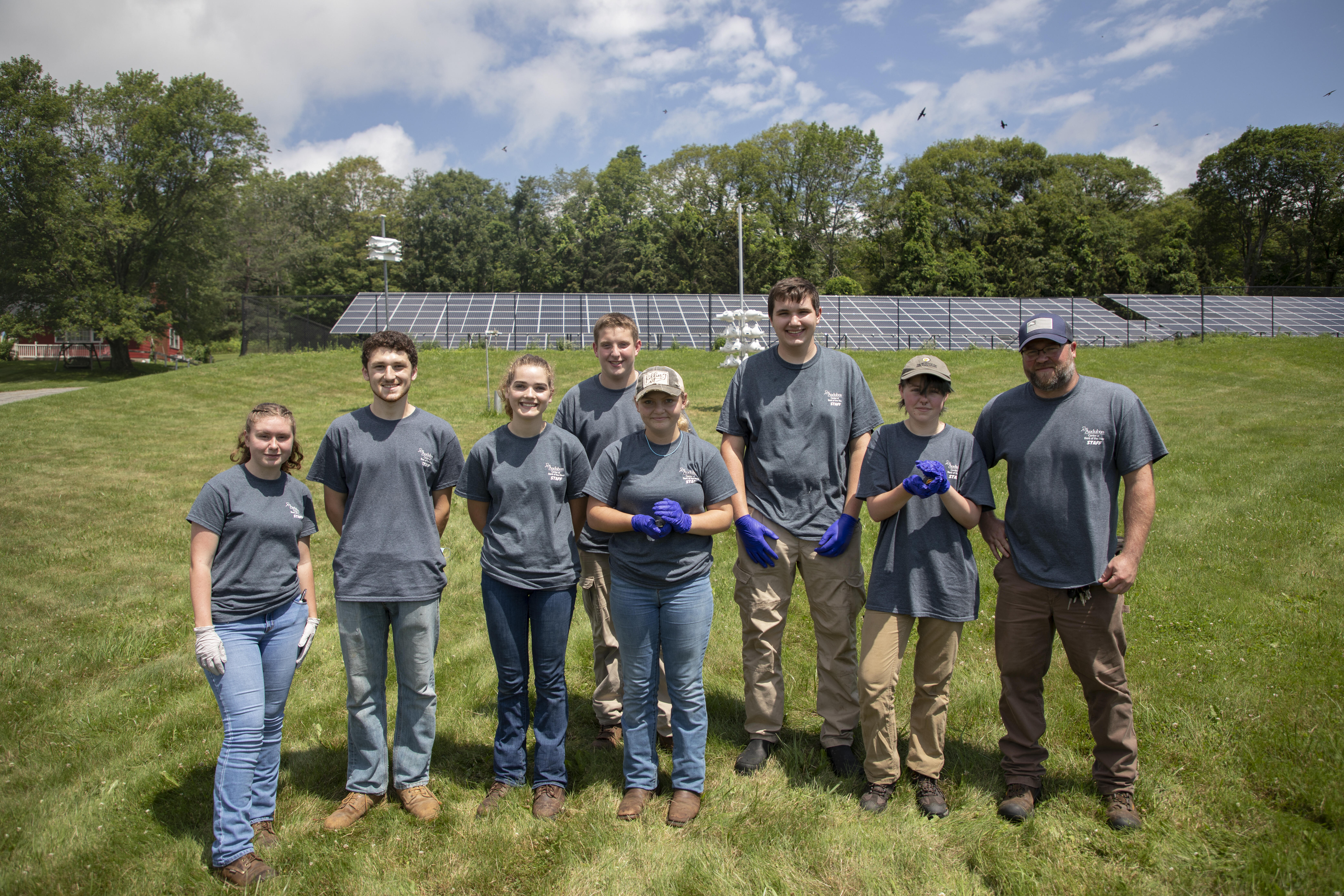Graceful in flight, musical in its pre-dawn singing, the Purple Martin is a big swallow with a big following. Almost all Purple Martins in the east now nest in birdhouses put up especially for them.
Martin housing has a long history: some Native American tribes reportedly hung up hollow gourds around their villages to attract these birds.
This summer, the Bent of the River Audubon Center Junior Forest Technicians (JFTs) visited Marvelwood School and the Kent Land Trust Interns to assist with Purple Martin chick banding.
63 nestlings were extracted from a local colony, and the crew recorded the weights and ages of chicks varying from 9-16 days old, in an effort to understand how Purple Martins move and colonize throughout Connecticut.

Purple Martins are among the first birds to return to the States during spring migration, and some of the earliest to leave. When they arrive, they settle into human-made nest boxes. Usually these homes are made out of hollow gourds, though some are designed as multi-story apartments made of aluminum, wood, or plastic.
The JFTs also used spotting scopes to identify and record banded adult Purple Martins. The information gathered will help the recovery of this state-listed species of special concern.

The Junior Forest Technician program, or JFT for short, is an eight week hands-on program led by Glen Somogie which allows five to ten local high school students to learn professional forestry skills and methods. The program, administered by Bent of the River Audubon Center, encourages students to gain career experience while contributing to the management of local forests and wildlife.

This was their first time partnering with Laurie Doss, Chair, Science Dept at Marvelwood School assisting in Purple Martin banding. Ms. Doss is also on the Board of Directors for both the Kent Land Trust and Purple Martin Conservation Association, who, in addition to the Connecticut Department of Energy & Environmental Protection (DEEP), have all played a critical role in restoring inland populations of Purple Martins in the northwest corner of Connecticut.



